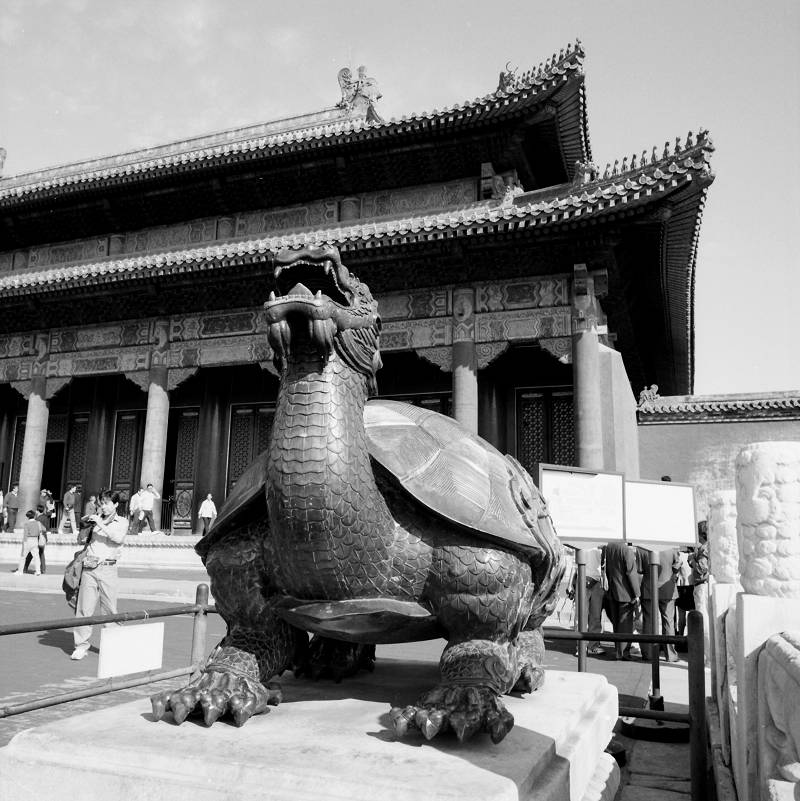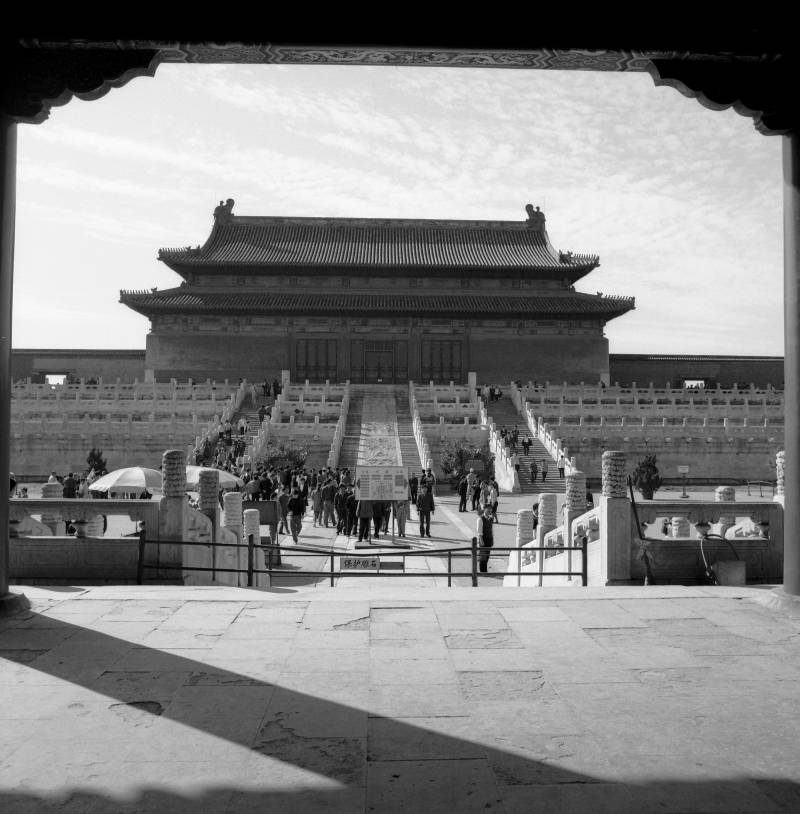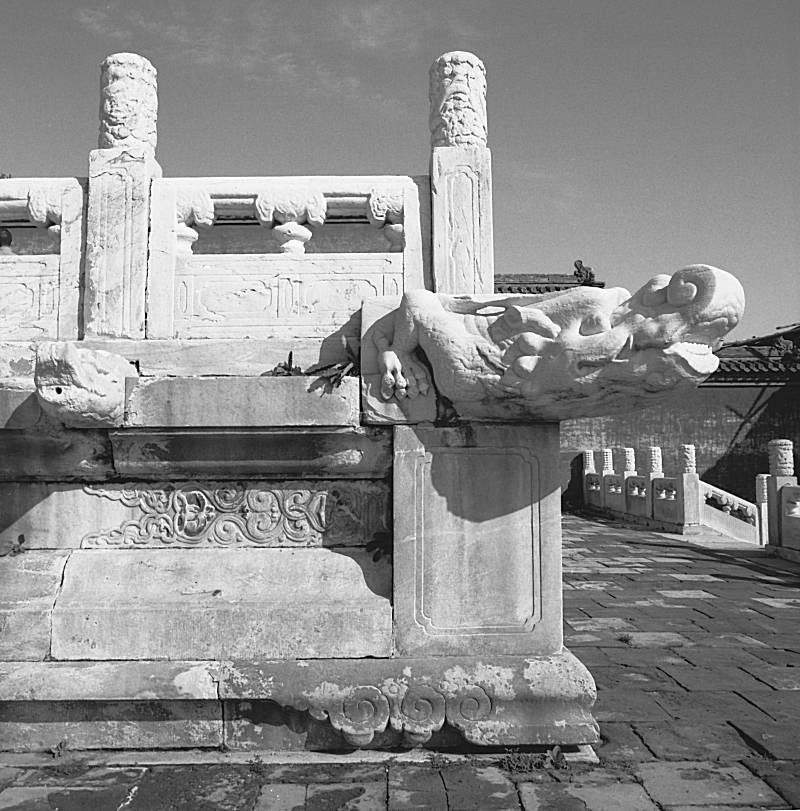
The last day in Beijing was in some ways the most interesting of them all. In the morning we set out to visit the 'Forbidden City' or the Palace Museum as it is called now. The Chinese name is Gugong which means the 'Former Palace'.
Technically speaking there are more 'former palaces' in China of which the former Ming palace in Nanjing might be the most important, second only to the Forbidden City in Beijing. The Nanjing Gugong was built 1367 by the first emperor Hongwu of the Ming dynasty since Nanjing was the first capital of Ming China.
After Hongwu's death and a fierce power struggle the second emperor of Ming, Yongle, established himself in the Northern (Bei) city (jing) and started to build his own palace here.
While nothing much except the general layout and a few gates are the only thing left of the Nanjing Gugong the Beijing Gugong or the Forbidden City is an impressive structure that on a sign board advertises that it is made up of 9,000 rooms.
We arrived to the Northern entrance which leads directly in to the private living area of the Emperor and his family, and walked along the central axis towards the southern main entrance. A central square temple is in general all that is left of what Yongle once built; otherwise everything else is much renovated during Qing not the least because many fires over the centuries.

Dragon turtle, symbol of longevity outside the Palace of Heavenly Purity. Gugong, 'The Old Palace'- The Forbidden City, Beijing
Photo © Jan-Erik Nilsson, 24 september 1992

Tribute walk leading up to the Palace of Heavenly Purity, central axix of Gugong, 'The Old Palace'- The Forbidden City, Beijing
Photo © Jan-Erik Nilsson, 24 september 1992

This rather forbidding structure is the Hall of Ancestral Worship, central axix of Gugong, 'The Old Palace'- The Forbidden City, Beijing
Photo © Jan-Erik Nilsson, 24 september 1992

Terrace corner, central axix of Gugong, 'The Old Palace'- The Forbidden City, Beijing
Photo © Jan-Erik Nilsson, 24 september 1992
An important element of the buildings is all these terraces and stairs. Especially fascinating are the "marble carpets" that are often found in the middle of the stairs. The largest one I saw was 2 x 7 meters in area and is said to be more than one meter thick, embedded in the ground.
Beihai is the lake in the park area just north west of the Forbidden City north entrance. Now a floating water lily had been added that, housed a serving area. At a temple close by was a large jade (nephrite) bowl, about 70 cm long. This you should take a good look at, the old King had told Bo and asked him to go there and photograph it. I now took the opportunity to draw the 12 water monsters that covers it in high relief. Maybe it's the same sea monsters that are included in the decoration of a number of old Ming porcelains objects.
The Swedish Embassy in Beijing is a nice villa in black and gray bricks on a large piece of land. Nils Olof Ericsson (Noe) were now here and met with us. The ambassador was newly appointed and wanted to take the opportunity to meet with Bo, who recommended me as a specialist in historical Swedish-Chinese trade relations during the 1700s. I promised to send a copy of my little book on the Götheborg via Noe. I took the opportunity to tell how we during our trip successfully had used Rörstrands Ostindiaservis as a gift, an idea the ambassador seemed to find interesting. The ambassador offered to at Bo's next trip arrange a "Gyllensvärd Dinner" if Bo only forwarded a list of persons that he wanted to meet with.
Buffet lunch at the China Trade Center. Annika from the Swedish-China Travel Agency joined in and we went together to Jinsong Antiques Market. We walked fairly briskly through the market and found some really beautiful souvenirs.
Spent the evening packing. Farewell dinner with NOE. Talked about the future and our hopes for a loan exhibition from the Shanghai Museum.
The flight home went well despite an impressive amount of things exceeding the luggage allowance.